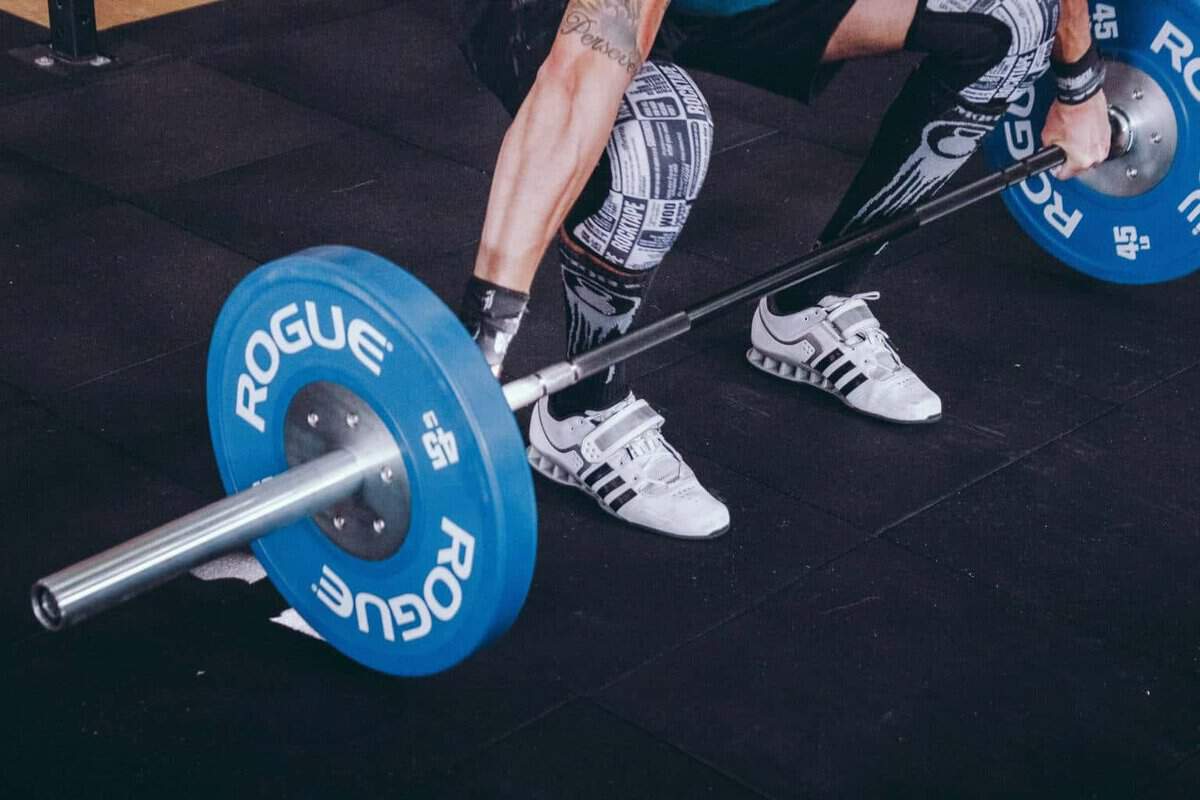The barbell row is an alternative to work the back if you don’t have a pull-up bar.
The ability to vary the grip and its width makes the barbell row a versatile gym exercise to train our back in its entirety.
What is the barbell row?
A row is a compound pull-type exercise that primarily works the middle part of the back, but also engages the lateral and arm muscles.
In addition to increasing strength and hypertrophy in the lats, rhomboids, and middle traps, heavy rows also increase the strength of the stabilizing muscles around the shoulder joint and help keep the humeral head centered within the glenoid cavity.
But, is it really worth it?
The usual barbell row, which we will focus on in the following article, is the horizontal barbell row.
The Barbell Row involves a large number of muscle groups, both directly and indirectly.
We will learn the proper technique to perform it, its benefits and drawbacks, so that we can decide if it is worth including it in our regular list when training the back.
What muscles are worked in the Barbell Row?
Including the horizontal barbell row in our gym routines will mainly serve to exercise our latissimus dorsi, posterior deltoid, and the teres major.
Although to a greater or lesser extent, this back exercise will help gain muscle mass in:
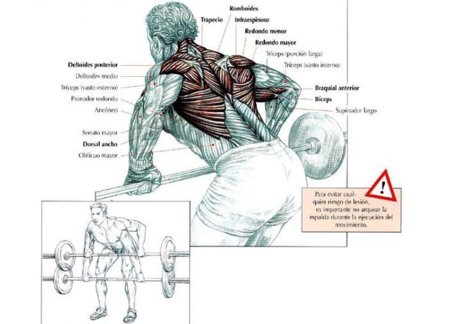
- Latissimus dorsi
- Erector spinae,
- Trapezius,
- Rhomboids
- Posterior deltoid
- Infraspinatus
- Brachioradialis
- Outer area of the upper pectoral
- Biceps brachii
- Long head of the triceps
- Adductors
- Hamstrings
- Abdominals (1) obliques
- Frontal abdominals
Raising the bar more towards the chest, we will work the latissimus dorsi and trapezius more in isolation.
Directing the bar more towards the abdomen, the lower portion of the latissimus will be more involved.
Performing a supine grip (palms facing up), we will focus more on the biceps and the ends of the latissimus dorsi.
En este curso vamos a tratar el entrenamiento de la fuerza orientada a la hipertrofia muscular, buscando las formas de optimizar el proceso a la hora de planificar las cargas y las sesiones de entrenamiento.
Aprenderemos a determinar cuándo nos interesa conseguir esa hipertrofia, cómo esta afecta a los niveles de fuerza y la importancia de conocer el estado inicial de la persona que se someta a este tipo de entrenamiento.
How is the barbell row done?
At first glance, the barbell row is not a complex exercise and to some extent may remind us of the deadlift or the good mornings.
Let’s see below how the execution (2) of this back exercise is.

The initial movement starts from a standing position, with knees slightly bent and feet pointing slightly outward.
The back straight, aligning shoulders, lower back, and glutes.
The most anatomical position and least injurious to perform the barbell row is with the back parallel to the ground, a standard hand separation will be shoulder-width with arms extended forward.
Correct movement of the Barbell Row
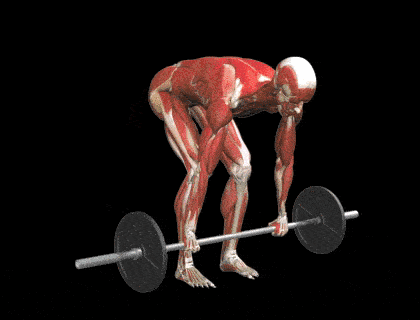
Once we have the bar held with a pronated grip (palms facing our feet) at shoulder height, we will (3):
- Look forward (slightly to the ground), your entire spine should be aligned.
- Movement of scapular retraction, and we start the elbow pull, along with the execution of a slight lumbopelvic dissociation (this prevents increased tension in the lower back).
- The wrists should remain in the same position throughout the movement, straight, locked.
- As the arms flex, the elbows go outward and end the movement at the highest position of our body. We will notice that to finish executing the barbell row correctly, in the high position, the scapulae tend to touch.
The barbell row is the antagonistic exercise (4) to the bench press. Therefore, anything that deviates from being the opposite movement to this, we must take into account to be able to identify possible errors.
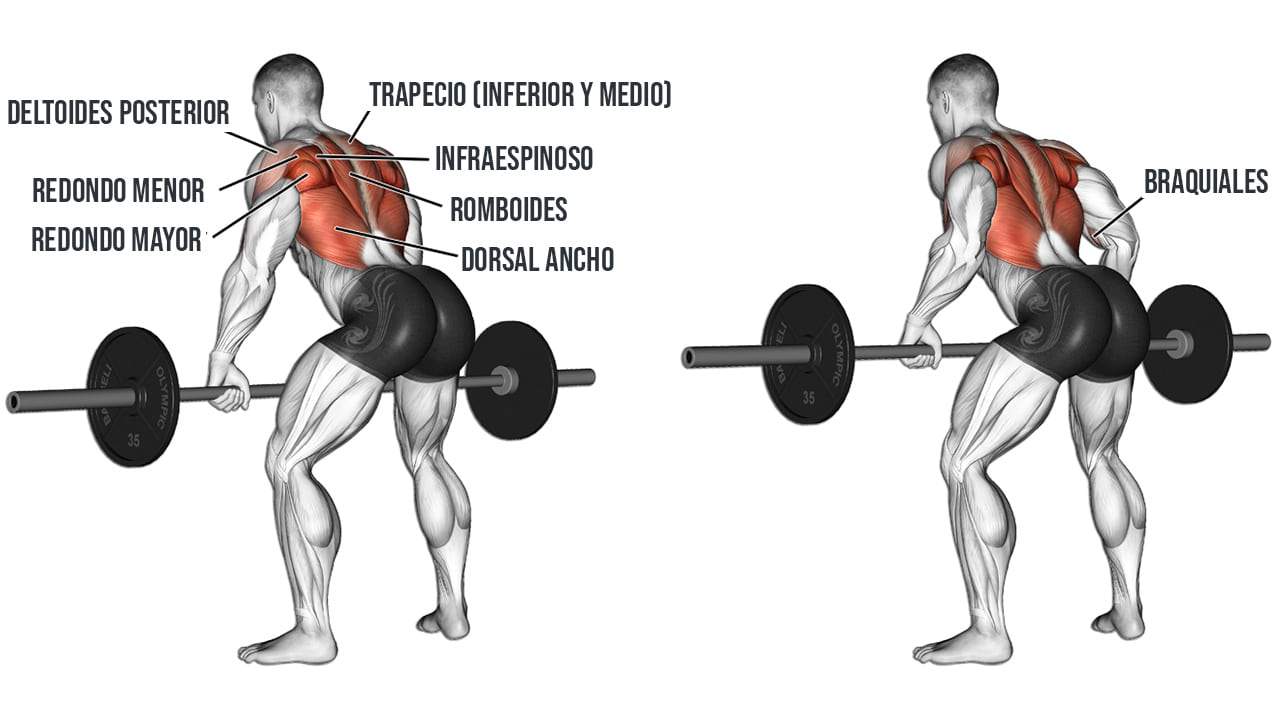
Common mistakes when performing the barbell row
Below we see an image, with two common mistakes when performing the barbell row.
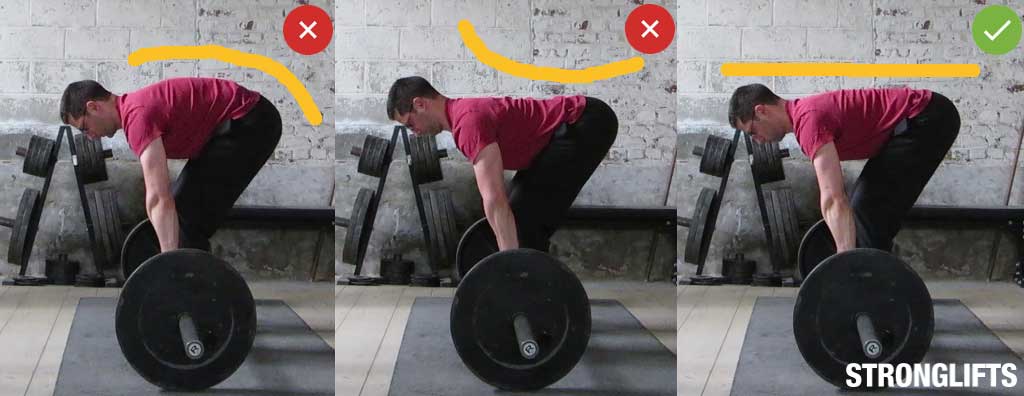
Therefore, it is advisable to be very cautious with weights until we have a refined technique.
At first glance, it may seem like a simple exercise, similar to a deadlift, but the combination of free weight and lumbar postural control is always injurious if not performed properly.
- Not having the back parallel to the ground in the initial position
- The upward movement of the bar causes us to bring it to the chest, when the endpoint should be below the pectorals. (The goal is the same as when we perform a low pulley row, we bring the grip towards the upper part of our abdomen or epigastrium)
- Performing twists or forced movements with the wrists. These should never lose the neutral position.
- Excessive movement of anterior or posterior pelvic tilt, losing the perpendicularity of our torso with the ground.
- When we carry a lot of weight, we will tend to raise the torso, this angle helps us move more weight because we involve more muscles. However, this is not the goal. We do not want to increase our RM (maximum repetition) at the expense of incorrect technique, what we seek is a good exercise to strengthen our back.
View this post on Instagram
